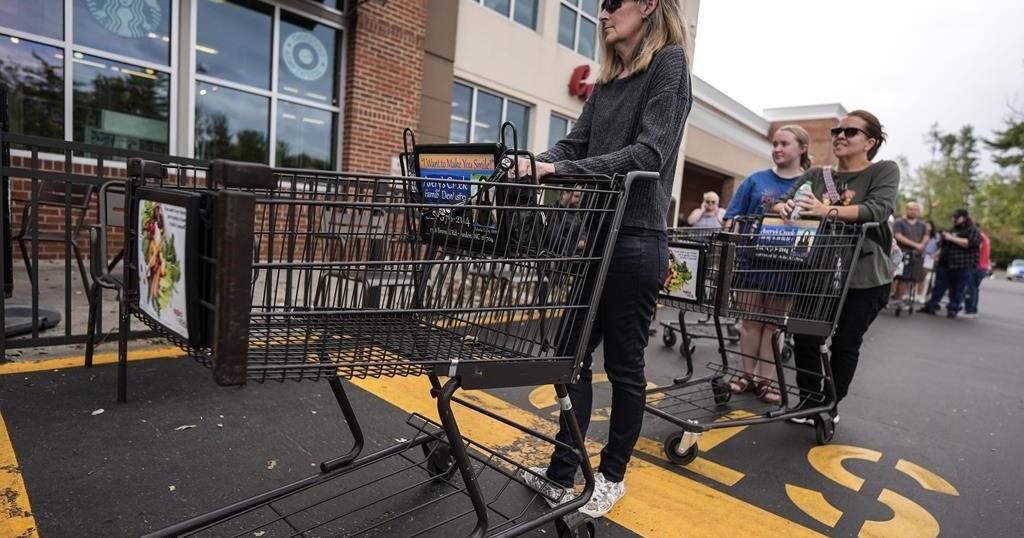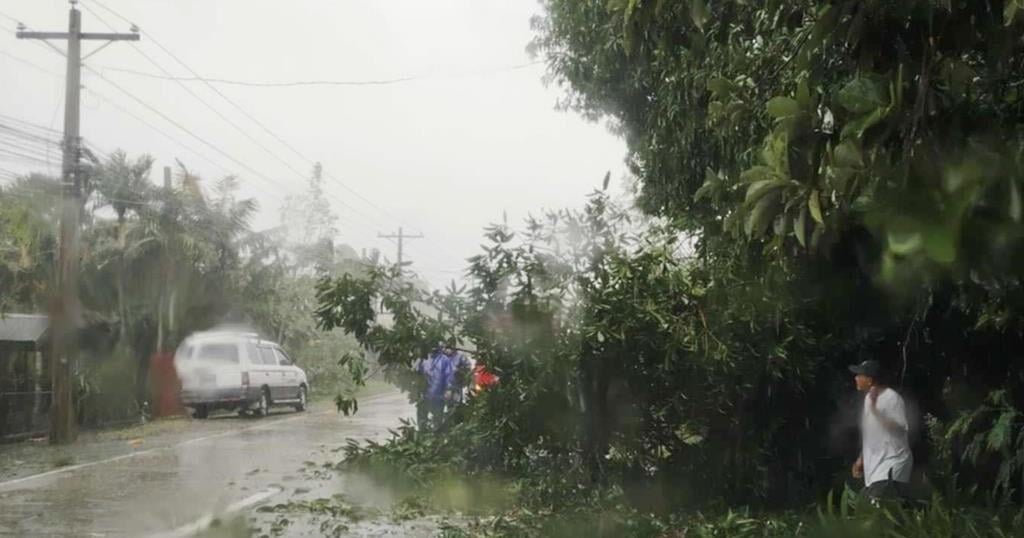Desperate residents of the storm-battered mountains of western North Carolina lined up for water and food, hunted for cellphone signals and slogged buckets from creeks to flush toilets days after Hurricane Helene’s remnants deluged the region. Emergency workers toiled around the clock to clear roads, restore power and phone service, and reach people stranded by the storm, which killed at least 133 people across the Southeast, a toll expected to rise.
President Joe Biden was set to survey the devastation Wednesday.
Follow AP’s coverage of tropical weather at https://apnews.com/hub/weather.
Here’s the latest:
In Augusta, Georgia, people are waiting in line for water
In Augusta, Georgia, a line wrapped around a massive shopping center, past the shuttered Waffle House and at least a half mile down the road to get water Tuesday.
At 11 a.m. it still hadn’t moved. Kristie Nelson arrived with her daughter three hours earlier. It was a muggy morning for October but they had their windows down and the car turned off because gas is a precious commodity too.
“It’s been rough,” said Nelson, who still hasn’t gotten a firm date from the power company for her electricity to be restored. “I’m just dying for a hot shower.”
Augusta and Richmond County have five centers for water set up for it’s more than 200,000 people. The city hasn’t provided specifics on the durations of outages for both water and power.
All around the city, trees are snapped in half and power poles are leaning. Traffic lights are out — and some are just gone from the winds that hit in the dark early Friday morning from Hurricane Helene.
Some 1.4 million people across the three states remain without electricity around noon Tuesday, according to power outage.us.
“It’s miserable here,” said David Reese who was probably looking at spending his entire day in a line for water, then for gas. “But I’m still feeling blessed. I’ve heard it’s a lot worse other places.”
Buncombe County manager says they’ve checked on the welfare of roughly 150 residents with ‘high needs’
“We’ve been going door to door, making sure that we can put eyes on people and see if they’re safe,” Buncombe County Manager Avril Pinder said.
Pinder said she couldn’t specify a number of county residents who remain “unaccounted for” since the storm.
“We know that there are places that are still hard to access,” Pinder said. “There’s still trees down or power lines down or water is still moving rather rapidly. So we’re being strategic in trying to get out to those neighbors now. We have helicopter support, and we’ve been trying to fly into areas that we cannot go by foot or by boat or by car.”
Helene and other storms dumped a whopping 40 trillion gallons of rain on the South
More than 40 trillion gallons of rain drenched the Southeast United States in the last week from Hurricane Helene and a run-of-the-mill rainstorm that sloshed in ahead of it — an unheard of amount of water that has stunned experts.
That’s enough to fill the Dallas Cowboys’ stadium 51,000 times, or Lake Tahoe just once. If it was concentrated just on the state of North Carolina that much water would be 3.5 feet deep (more than 1 meter). It’s enough to fill more than 60 million Olympic-size swimming pools.
“That’s an astronomical amount of precipitation,” said Ed Clark, head of the National Oceanic and Atmospheric Administration’s National Water Center in Tuscaloosa, Alabama. “I have not seen something in my 25 years of working at the weather service that is this geographically large of an extent and the sheer volume of water that fell from the sky.″






















